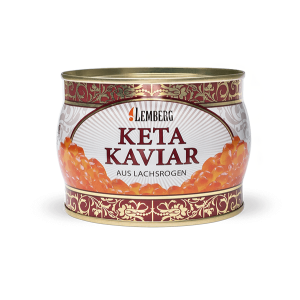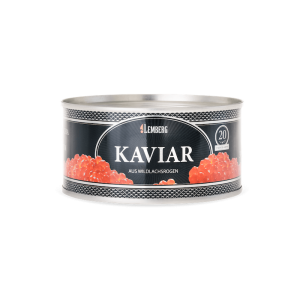What Fish Does Caviar Come From? A Complete Expert Guide
- What Is Real Caviar?
- Where Does Caviar Come From? Understanding Its True Origins
- Caviar From Non-Sturgeon Fish (Caviar Substitutes)
- Conclusion: Choosing the Right Caviar for You
- FAQ: Everything You Need to Know About Caviar Origins
Where does caviar come from, and which fish produce the finest roe? These are common questions among caviar enthusiasts. As one of the world’s most sought-after delicacies, caviar is exclusively made from sturgeon fish. But where did caviar originally come from, and how did it become a symbol of luxury? Let’s explore its origins. While true caviar is exclusively derived from sturgeon, there are also other fish that produce roe commonly marketed as caviar substitutes. In this guide, we’ll explore the origins of caviar, the different sturgeon species, and alternatives that have gained popularity in the market.
What Is Real Caviar?
By definition, authentic caviar comes only from fish in the Acipenseridae family. According to international food standards like the Codex Alimentarius, only roe from sturgeon species can legally be labeled as "true caviar". Other types of fish roe, such as salmon or trout, must be labeled with the species name (e.g., "salmon caviar")
Sturgeons are ancient fish species that have been around for over 250 million years. Due to their slow reproductive cycle and overfishing, many species are now endangered, making wild sturgeon caviar extremely rare and expensive. Today, nearly all caviar comes from sustainable aquaculture farms.
Where Does Caviar Come From? Understanding Its True Origins
Different types of sturgeon roe vary in size, taste profiles, and texture. Here are the most famous species used in premium roe production:
Beluga Sturgeon (Huso huso) – The Most Expensive Caviar
- Native to: Caspian Sea, Black Sea, and Danube River
- Caviar Characteristics: Large eggs (up to 4 mm), smooth and creamy texture, light gray to black color
- Flavor Profile: Buttery, delicate, and slightly nutty
- Price Range: Up to $5,000 per kg
- Fun Fact: Beluga sturgeons can grow over 4 meters long and weigh over 1,000 kg!
Ossetra Sturgeon (Acipenser gueldenstaedtii) – The Gourmet Favorite
- Native to: Caspian Sea, Black Sea, and Volga River
- Caviar Characteristics: Medium-sized eggs (2-3 mm), golden brown to dark gray color
- Flavor Profile: Rich, nutty, and slightly briny
- Price Range: $900–$4,000 per kg
- Why It’s Popular: Ossetra caviar is a favorite among chefs due to its balanced, sophisticated flavor.
Siberian Sturgeon (Acipenser baerii) – The Sustainable Choice
- Native to: Siberian rivers flowing into the Arctic Ocean
- Caviar Characteristics: Smaller eggs (1.5–2.5 mm), dark gray to black color
- Flavor Profile: Mild, smooth, slightly earthy
- Price Range: $900–$2,000 per kg
- Why It’s Important: One of the most widely farmed sturgeon species, making it a more sustainable caviar option.
Sterlet Sturgeon (Acipenser ruthenus) – The Royal Caviar
- Native to: Caspian Sea, Black Sea, and Russian rivers
- Caviar Characteristics: Small eggs (1–2 mm), dark gray to black color
- Flavor Profile: Mild, slightly sweet, and creamy
- Historical Significance: Favored by Russian and Persian royalty for centuries.
Kaluga Sturgeon (Huso dauricus) – The River Beluga
- Native to: Amur River (China-Russia border)
- Caviar Characteristics: Large eggs similar to Beluga, dark olive to gray color
- Flavor Profile: Buttery and smooth, with a bold umami taste
- Why It’s Unique: Often called “River Beluga” due to its similar caviar quality.
Caviar From Non-Sturgeon Fish (Caviar Substitutes)
Although true caviar only comes from sturgeon, other fish roe is often marketed as caviar alternatives. These varieties are more affordable and have unique flavor profiles:
Keta Salmon Caviar (Oncorhynchus keta) – The Premium Choice
- Egg Size: Large (up to 5 mm)
- Color: Bright orange to deep red
- Flavor: Mild, slightly sweet, and less briny than other salmon caviar
- Price Range: $90–$200 per kg
- Why It’s Popular: Known for its large, firm eggs and mild taste, making it a favorite in Japanese cuisine.
Pink Salmon Caviar (Oncorhynchus gorbuscha) – The Most Affordable Option
- Egg Size: Medium (3–4 mm)
- Color: Light orange to pale red
- Flavor: More briny and slightly fishier than Keta caviar
- Price Range: $85–$100 per kg
- Why It’s Popular: The most widely available and budget-friendly salmon caviar, commonly used in Russian and European dishes.
Trout Caviar (Oncorhynchus mykiss)
- Egg Size: Small to medium (3–4 mm)
- Color: Golden-orange
- Flavor: Mild, slightly smoky
- Popular In: Scandinavia, Russia, and Japan
Lumpfish Caviar (Cyclopterus lumpus) – The Budget Choice
- Egg Size: Small (1–2 mm)
- Color: Artificially dyed black or red
- Flavor: Salty and slightly fishy
- Price: $20–$50 per kg
- Why It’s Used: Often used as an inexpensive substitute for sturgeon caviar.
Whitefish Caviar (Coregonus clupeaformis)
- Egg Size: Small (1–2 mm)
- Color: Pale yellow
- Flavor: Mild and delicate
- Used In: Sushi and gourmet dishes.
Conclusion: Choosing the Right Caviar for You
Now that you know what fish caviar comes from, you can make an informed choice when selecting the best caviar for your taste and budget. If you’re looking for authentic luxury, opt for Beluga, Ossetra, or Kaluga caviar. If you prefer a more affordable alternative, salmon or trout caviar offers great flavor at a lower price.
Whatever you choose, caviar remains a symbol of gourmet excellence and an unforgettable culinary experience.
FAQ: Everything You Need to Know About Caviar Origins
1. What types of sturgeon are used for caviar production?
Caviar comes primarily from sturgeon fish (Acipenseridae family). The most famous sturgeon species for caviar production include Beluga, Ossetra, Siberian Sturgeon, and Sterlet. However, there are also non-sturgeon fish roe, such as salmon, trout, and lumpfish, that are sold as caviar substitutes.
2. Where does the caviar come from?
Most real caviar comes from sturgeon farms across Europe, the Middle East, and North America. Historically, wild sturgeon from the Caspian Sea, Black Sea, and Russian rivers were the main sources of caviar. Today, due to overfishing, caviar is almost entirely sourced from sustainable aquaculture.
3. What fish produce real caviar?
The term “caviar” officially refers to sturgeon roe. The most prized types come from:
- Beluga Sturgeon (Huso huso) – Produces the most expensive caviar
- Ossetra Sturgeon (Acipenser gueldenstaedtii) – Known for its nutty taste
- Siberian Sturgeon (Acipenser baerii) – A sustainable alternative
- Sterlet Sturgeon (Acipenser ruthenus) – Historically served to Russian tsars
Other fish, such as salmon and trout, also produce roe, but they are not classified as true caviar.
4. Is there vegetarian or vegan caviar?
Yes! Vegan caviar alternatives exist, made from seaweed, algae, or molecular gastronomy techniques. While they don’t match the taste of real sturgeon caviar, they offer a sustainable and ethical alternative.
5. Why is caviar so expensive?
Caviar is expensive because sturgeons take years to mature before producing roe. Additionally, traditional harvesting methods and strict sustainability regulations limit supply, driving up costs. Beluga caviar, for example, comes from sturgeons that take up to 20 years to reach maturity!
Last update: 29.01.2025
Our bestsellers
More Recipes & Tips
Indulge in the exquisite flavors of Ossetra caviar. With its medium-sized eggs, this delicacy offers a buttery taste and a subtle hint of nuttiness. Elevate your dining experience with this luxurious treat, perfect for special occasions.
Whether you want to enjoy the luxurious black caviar or prefer to opt for a less costly red variety, it is important to know how to serve caviar. Read on to learn what garnishes and drinks to offer to your party.
There are many different technologies for extracting caviar, depending on a variety of factors. And since a thorough discussion of this topic falls outside the scope of our article, we will only describe the most common method...
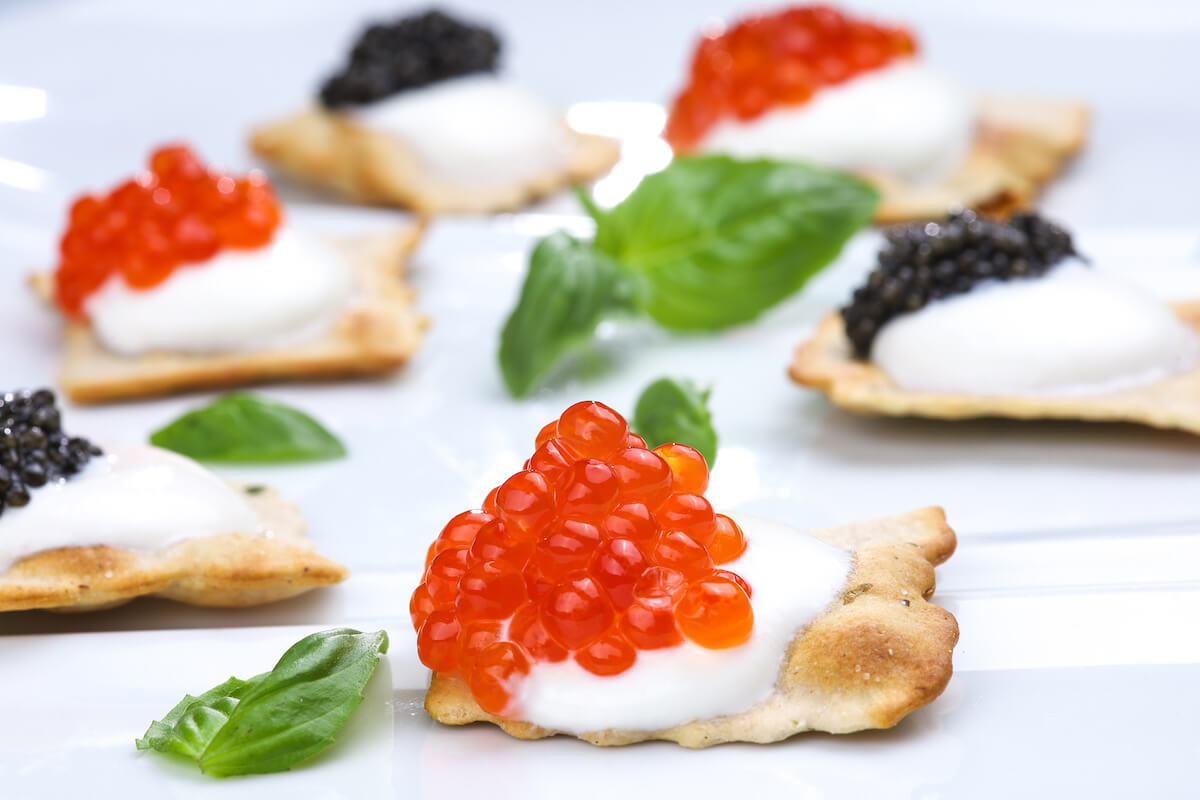
Indulge in the exquisite flavors of Ossetra caviar. With its medium-sized eggs, this delicacy offers a buttery taste and a subtle hint of nuttiness. Elevate your dining experience with this luxurious treat, perfect for special occasions.
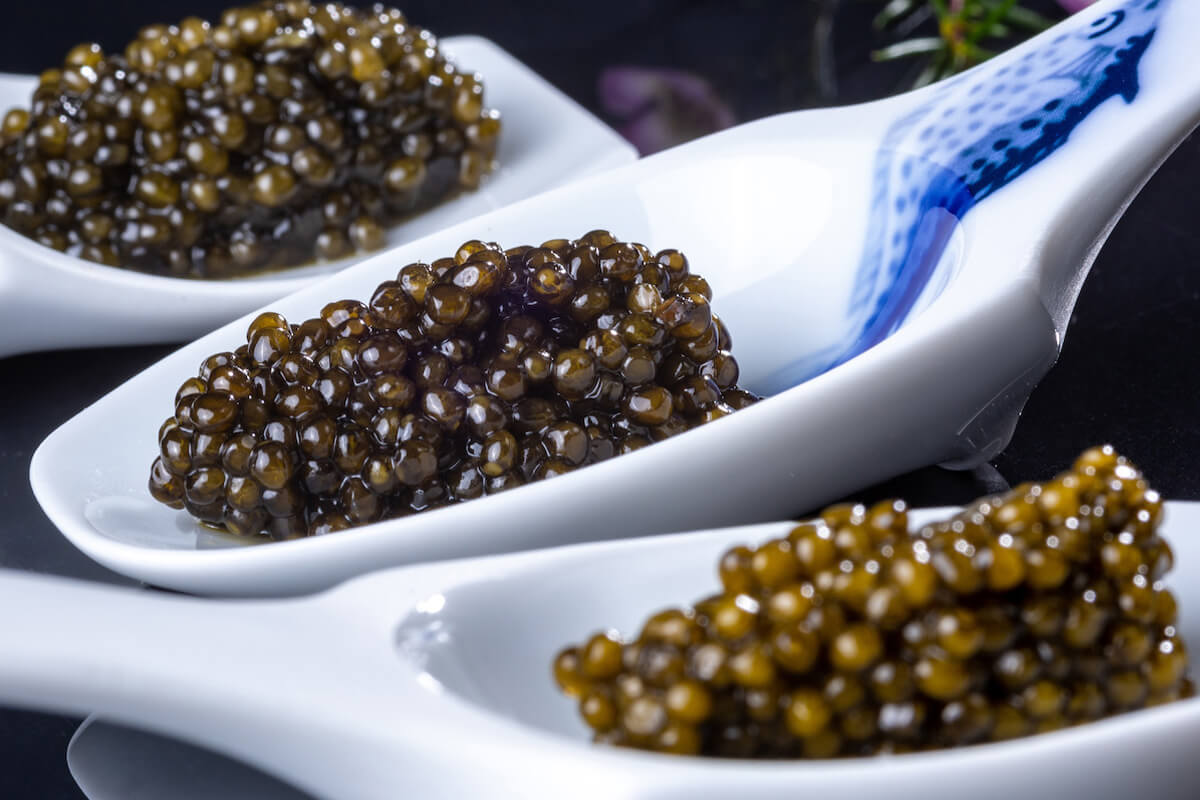
While the original Persian word khavyar simply means "egg," not every egg can be described as caviar. Some producers tend to apply this prestigious label to any type of roe from capelin to salmon and everything in between.
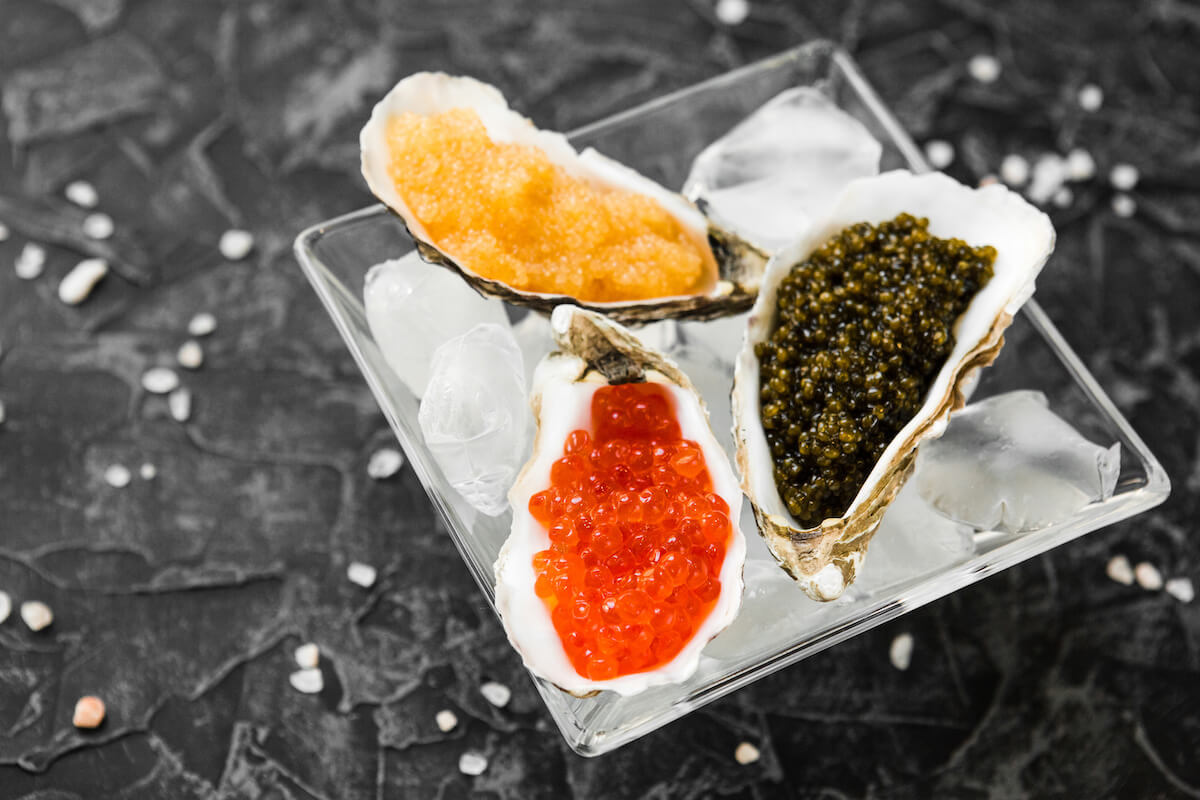
Whether you want to enjoy the luxurious black caviar or prefer to opt for a less costly red variety, it is important to know how to serve caviar. Read on to learn what garnishes and drinks to offer to your party.
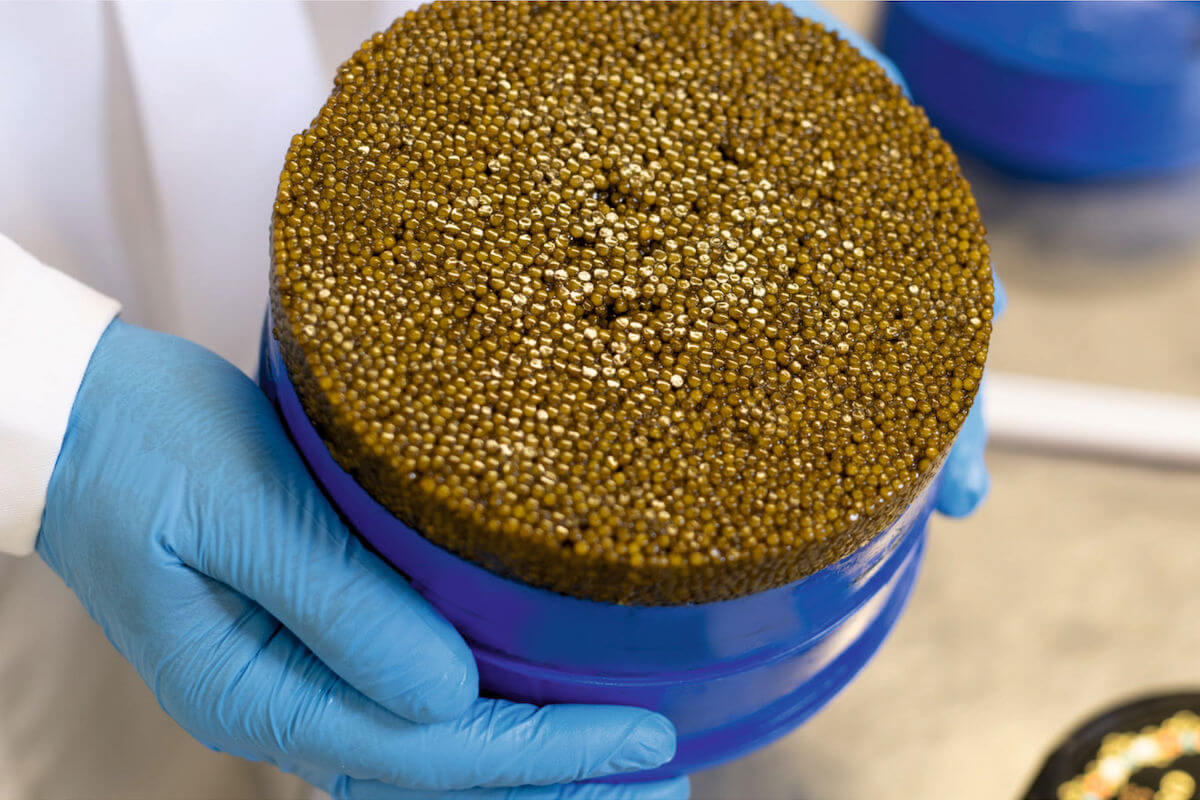
There are many different technologies for extracting caviar, depending on a variety of factors. And since a thorough discussion of this topic falls outside the scope of our article, we will only describe the most common method...

 Русский
Русский
